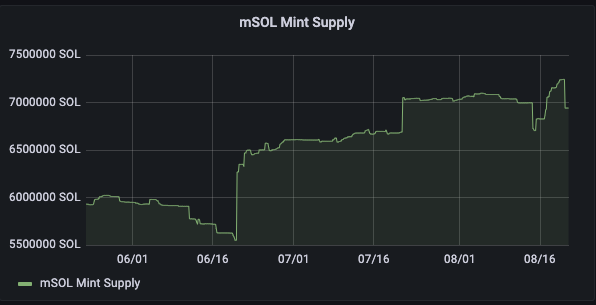Hi @y00ts, thanks for the post! If the liquidity mining gauges are doing a good job or not is a valid question, but for context, they have been active only for a bit over a month. It remains to be seen if they will incentivize staking with Marinade, but I’m not sure they have been out for long enough for there to be enough data.
There is also an on-going discussion regarding incentives on this thread, where you’ll see I asked a similar question.
This is something that I’d be happy to see, even if I suspect that this early the end result will be that liquidity mining gauges correlate more with where mSOL ends up than with mSOL minting.
You can see the mSOL mint supply for the last 90 days on this chart:
Liquidity gauges launched on July 5, but the first voted-on incentives were claimable after July 15.
While there has been a large mSOL increase in that period, I believe it is unrelated - there were two large deposits, iirc 1M and 400K SOL respectively.
Let me process your other points further before replying. However, something to keep in mind:
For background, the Liquidity Mining Gauges passed through a governance vote (see this proposal). Changing liquidity incentives to work in a different way would also require a DAO vote - it’s not something that the MasterChefs can decide unilaterally.
That means we should discuss further in the DAO, come up with a workable mechanic, and hopefully get a community proposal out of it.
Are you on Marinade’s Discord? We have a Governance channel that is usually more active than the forum, and where you could drum up support for these ideas.
